Tutorial with explanations to learn the harmonic minor scale or flamenco scale used in flamenco on guitar.
The flamenco scale on guitar
The flamenco scale or harmonic minor scale is a scale derived from the natural minor scale.
The harmonic minor scale, which is played on minor keys, is one of the most used scales in flamenco.
Like the major and minor scales, it consists of seven notes.
As we shall see, the variation with the natural minor scale is subtle and concerns only the 7th note which is raised.
Learn more :
In music, scales represent a sequence of notes played differently according to a specific key.
But you must know that there is a logic to all this. Indeed, a minor key for example, and the scale which forms it, is materialized by…
… a series of well-defined intervals between notes starting from the tonic (i.e. the first note of the scale, which is the one that gives its name to the chord).
To build your scale, you just have to start from the tonic (which gives the key of your scale) and then respect these particular intervals specific to the scale you want to play :
Natural minor scale
1 tone – 1/2 tone – 1 tone – 1 tone – 1/2 tone – 1 tone – 1 tone
Flamenco scale (harmonic minor)
1 tone – 1/2 tone – 1 tone – 1 tone – 1/2 tone – 1 tone – 1 1/2 tone
Example :
So, to have an harmonic minor scale of Am, we must start from our tonic (A) and respect the following interval : 1 tone – 1/2 tone – 1 tone – 1 tone – 1/2 tone – 1 tone – 1 1/2 tone
I give you here the intervals for the natural major and minor scales. You can also have a look at our course on major and minor scales and pentatonic scales :
We are not going to go into the theory but only look at how to play these scales on the guitar.
Important point !
Since we won’t go into the theory, keep in mind an important thing :
You can play all scales, whether they are Em, Fm, Gm, etc… knowing only one pattern that we are going to teach you.
You just need to know how to find the right position on the neck according to the key of the song, which we will also show you.
As the name suggests, the flamenco scale (harmonic minor) is played on a piece with a minor key.
The scale on the neck
The idea is to show you how to play this flamenco scale on any music. For this, we will use patterns.
Don’t panic !
First, I’ll show you the global pattern of the different patterns on the whole neck and then in the next section, I’ll show you each pattern independently.
So here is the global scheme on the whole neck of the guitar :

The seven notes of the harmonic minor scale are represented and, as you can imagine, the same note several times and on several octaves.
As you can see, there are different colors. Each color corresponds to a different pattern.
Let’s look at these different patterns together, how they fit together, where they are placed according to the key and how to use them to improvise.
Don’t dwell on it here, you’ll come back to it later when you understand the logic.
The harmonic minor scale (flamenco) patterns
So there are several patterns that I have signified with different colors.
The different colors do not represent different scales but the same scale played differently in different places.
Because, on the guitar, there is a multitude of notes present on the neck. Thus :
… the seven notes of the harmonic minor scale are repeated a multitude of times.
And, to make life easier …
… we will cut the neck in different pieces and look at the patterns of this scale on the different pieces.
So, on the guitar, and especially when it comes to playing scales, you shouldn’t think about the length of the neck but rather the width.
Learn more :
As we saw in the guitar notes lesson, for most strings, the note on the fifth fret corresponds to the next open string (except for the G string where it is on the 4th fret).
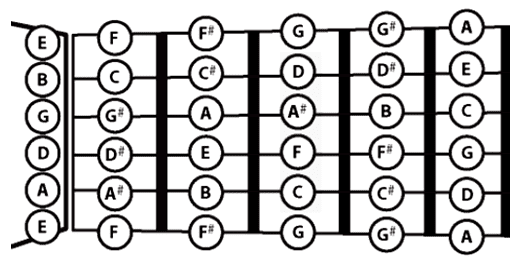
The different patterns of the harmonic minor scale (flamenco)
So I’m putting below the different patterns cut out of the global pattern with their respective colors. We will then see how they fit together and how to use them to improvise.
The shaded note with an F is the augmented 7th which differs from the natural minor scale to the harmonic minor scale. I have marked it with an F because it gives the flamenco color.
Pattern 1
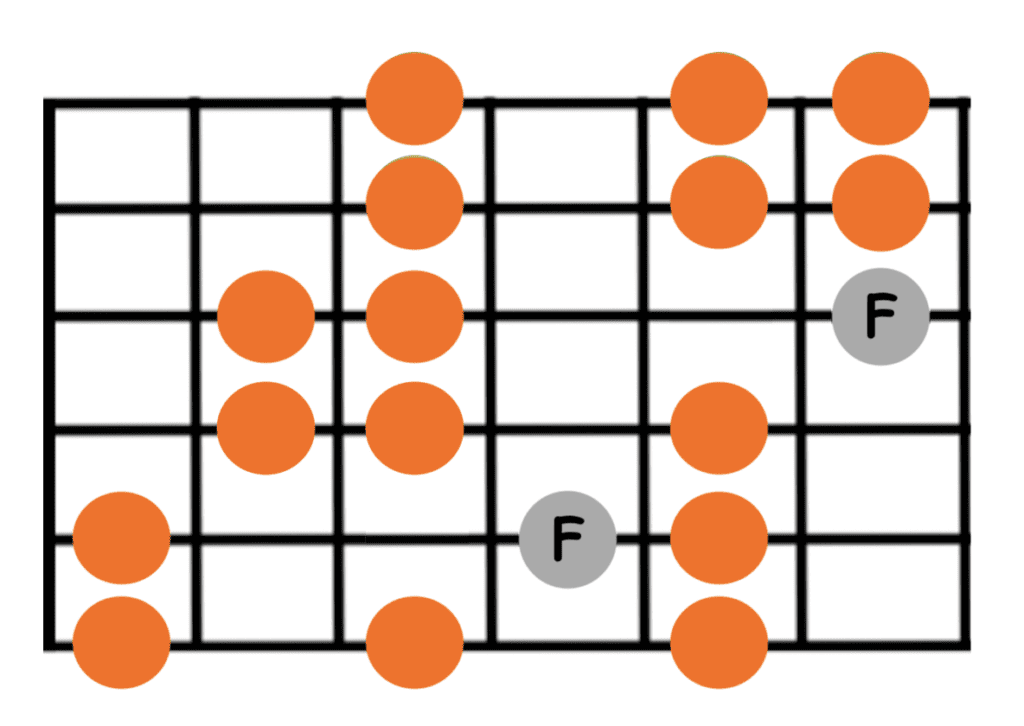
Pattern 2
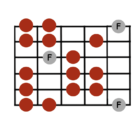
Pattern 3
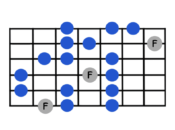
Pattern 4
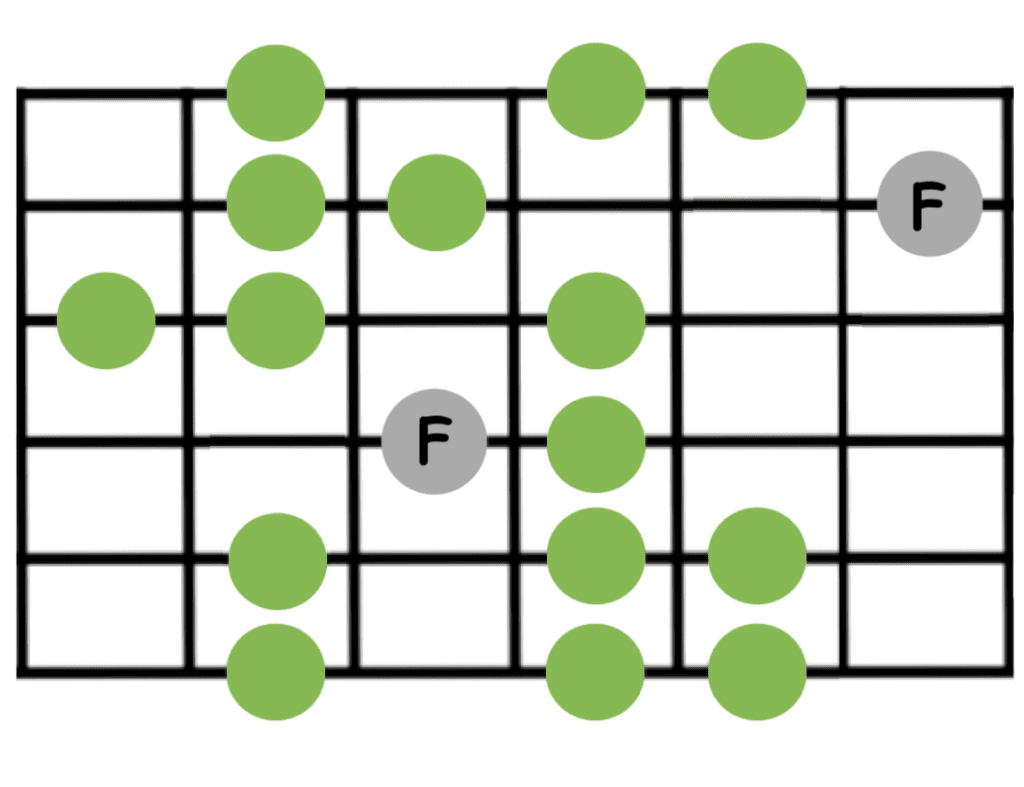
Pattern 5

When and how to play the flamenco scale (harmonic minor) on guitar ?
You will have understood that :
- Each pattern is played from top to bottom from low E to high E (or vice versa)
- You can go from one pattern to another (from one color to another) in the direction of the neck (from left to right). And, for that, it is necessary to respect the order of the colors :

But you will probably ask yourself :
“Ok but where do I start?”
I give you here two situations thanks to which you will be able to find your way and place the different patterns according to the key of the piece.
I also remind you that the harmonic minor scale (even if the patterns are the same as for the major scale and the natural minor scale) is only used for a piece with a minor key.
I refer you to the “minor scales” part of our article on natural major and minor scales.
Situation 1 – Low E string
If the tonic note of your minor song (i.e. generally the bass of the first chord) is a note played on the first low E string, then you will find your way thanks to the green pattern.
The first note of the green pattern (circled in green below) is then the tonic note of the scale of your piece.
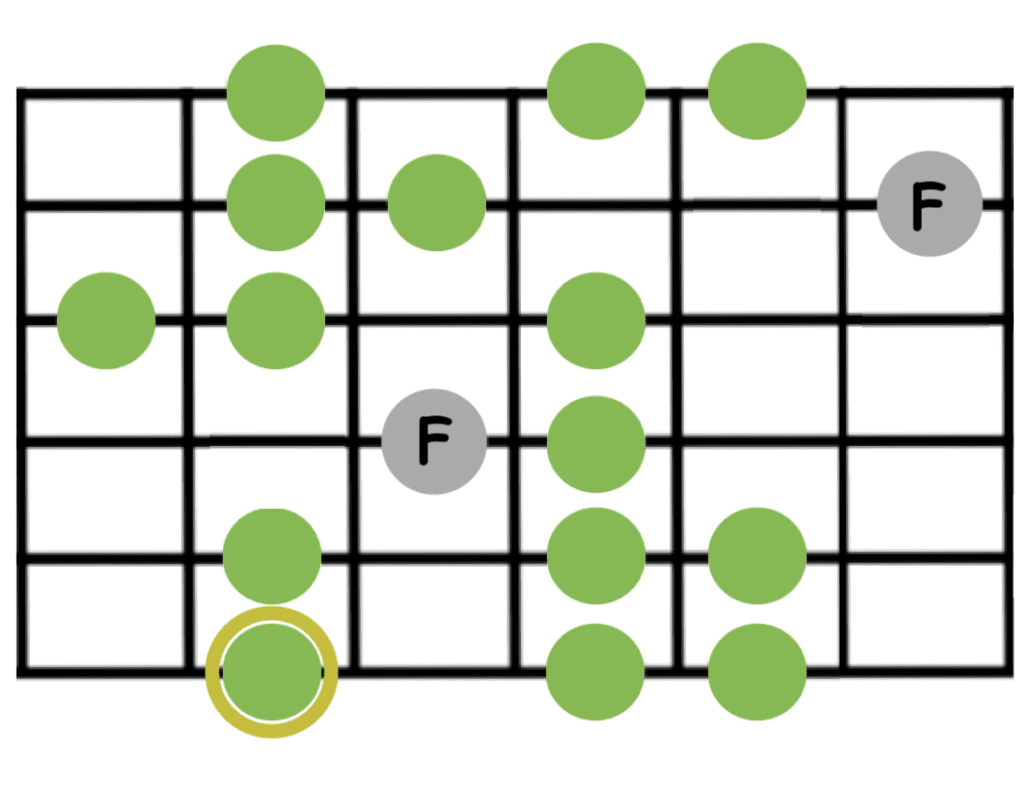
Example – Am flamenco scale
If your piece is in Am (i.e., usually starts with an Am), you will find your Am chord on the 5th fret :
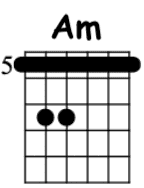
Then the green pattern will be positioned from the bass of this chord, i.e. will start on the low E string from the 5th fret :

Situation 2 – A string
If the tonic note of your minor piece is a note played on the A string, then you will find your way thanks to the red pattern.
The first note the red pattern (circled in green below) corresponds to the tonic note of the scale of your song.
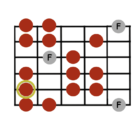
Example – A pentatonic scale
If your song is in Dm (that is, generally, if it starts with an Dm), you will go and find your Dm chord on the 5th fret :
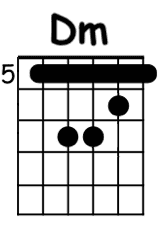
Then the red pattern will be positioned from the bass of this chord, i.e. will start on the low A string played on the 5th fret :
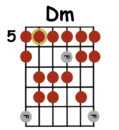
So, if you have understood our example with the two minor keys of Am and Dm, it is possible to locate yourself in two ways :
- On the low E string with the green pattern
- On the A string with the red pattern
Improviser with the harmonic minor scale
Thus, for the example of the piece played in A minor, the green pattern is located at the 5th fret and the other patterns are intercalated in the same order as on the global pattern, the red pattern being at the beginning of the neck (with the first notes on the open strings).
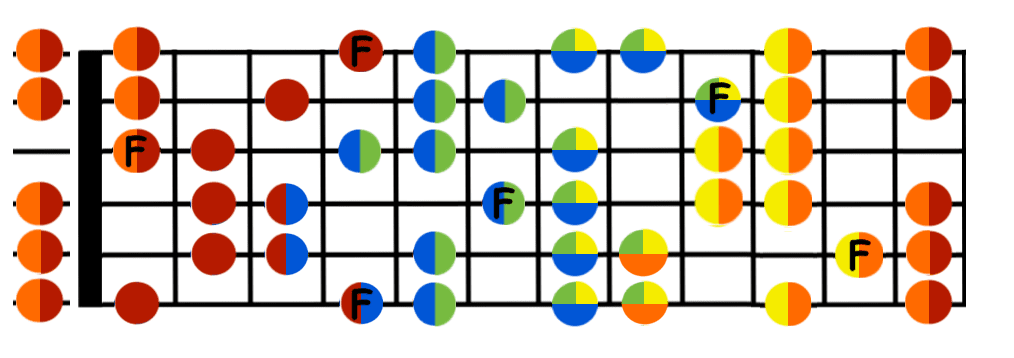
And if you look again at our global pattern, you can see that the patterns have moved but the order remains the same :

So, when you have in mind this sequence between the colors and you know how to position yourself according to the key of the song, you can move from one scheme to another by going down and up the neck.
Good work !!
